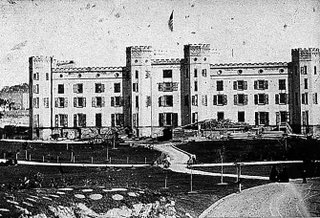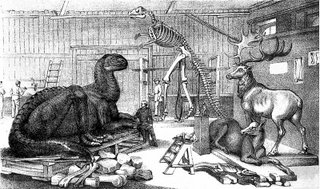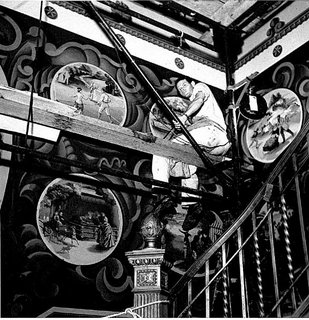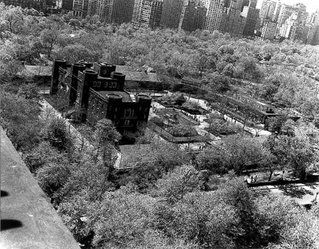Gray’s Papaya (& Mark Sandman)
http://www.papayaking.com/index.htm
(This first section written sometime in October) à I totally went to my first Gray’s Papaya Monday, October 23, 2006. It is one block away on
 Gray’s Papaya is apparently a freaking famous place. All I know is that is was cheap as shit and a damn good hotdog. I try to eat fairly healthy so I haven’t been to a hotdog stand since I moved here but now I have gone three times to this place, thanks to my friend Network who hooked it UP!!
Gray’s Papaya is apparently a freaking famous place. All I know is that is was cheap as shit and a damn good hotdog. I try to eat fairly healthy so I haven’t been to a hotdog stand since I moved here but now I have gone three times to this place, thanks to my friend Network who hooked it UP!!
First time he realized I had one a block from me he immediately got hungry and so we just had to go he said. Again, I try to eat healthy and mostly like to make my own fun foods. So, I have been cooking a ton. I had eaten dinner at this point because I also do not eat a bite of food after 7pm, 8pm at the LATEST. It was freaking 11pm when we made the hike.
We get there and he gets two dogs with chili and a drink, I still don’t know the name but it was a papaya drink. IT WAS SO GOOD. The drink is something I would drink because of the flavor and it FELT healthy haha. But the dog with chili was awesome.
I have given up trying to eat healthy here because I can do that when I am older. However, I do have to work out daily now to combat the pounds. And yes! I am one of those who do not like feeling or looking fat. But DAMN do I LOVE TO EAT – you do what you have to do hahaha. Unfortunately, I hate working out SO MUCH MORE that I tend to steer clear of fattening food and stick with healthy food for that reason – THUS – the vicious cycle that I am trying to break now by just eating what I want and working out –……………..(This is where I stopped typing months ago because it appears I just started to ramble.)
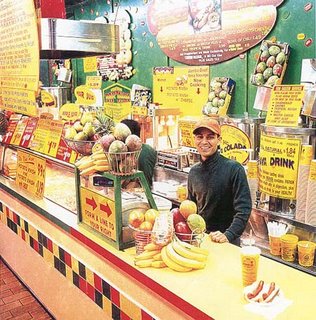 Now today is freaking January 5, 2007……….…I never finished and posted this note back in October when I wrote it and now I have gone back to the Gray’s Papaya so many times 5 pounds of my body has to be a hotdog with chili and cheese and another 5 pounds is Papaya juice!!!!!
Now today is freaking January 5, 2007……….…I never finished and posted this note back in October when I wrote it and now I have gone back to the Gray’s Papaya so many times 5 pounds of my body has to be a hotdog with chili and cheese and another 5 pounds is Papaya juice!!!!!
The Original Papaya King is two blocks east of my apartment. It’s a five minute walk but I would walk farther for these bad boys!! This is a hole in the wall that is a very tight squeeze. It is a stand up place that can maybe hold ten people at a time. There is ALWAYS a line. I have only eaten about 600 hotdogs with chili cheese, an order of large chili cheese curly fries, which come in a cup and are covered with cheese goo and chili mixed in, and a papaya juice drink.
I, of course, have tried to take everyone who has ever come to visit me because, as you might read below, the place is pretty famous and a staple specific to NYC history. Jessie liked them so much on her visit here she snagged a few brochures about the place.
And The Papaya King story goes like this:
In 1923, a 16-year-old Greek boy named Gus Poulos arrived at the docks of Ellis Island from
Now that he was a business owner, Gus was able to take his first vacation and, like many Americans, set his sights on the sunny beaches of
 When he got back to
When he got back to
At first, no one came. His store piled high with perishable tropical fruits, Gus decided that if he couldn't sell his drinks, he would give them away rather than letting the fruit go to waste. So he hired waitresses to dress up in traditional Hawaiian skirts and had them stand on the corner handing out free glasses of fruit drinks as Gus worked a blender inside the store.
It didn't take long for New Yorkers to get hooked. Soon he had lines forming outside his shop on the days of his fresh fruit deliveries and the legend of his papaya drinks began to spread. In 1935, he opened another store in Brooklyn, and in 1937, he set up his third shop in
Gus' first store was on
As the decades passed, Gus' fruit stands grew in stature and fame. Gus opened several more outlets in
 By the 1950's, the "Papaya King's" fame had spread across the country and the original store on
By the 1950's, the "Papaya King's" fame had spread across the country and the original store on
In 1958, his son Peter, fresh out of college, decided to join in and took over the day-to-day operations of the
In the 1970's, Peter's cousin Alex, Gus' nephew, joined in the business. Despite their success, however, Peter and Gus wanted to focus their attention on the
Today, say the words "Papaya King" to a New Yorker and hot dogs and fruit drinks will instantly come to mind. Papaya King has been called by Zagat the "best, cheapest (stand-up) lunch in the city", and a "must visit" highlight of any trip to
The Zagat dining guide has called Papaya King the “best, stand-up lunch in the city” and a “must-visit-high-light of any trip to
There is a freaking Sausage thing that is made with bull testicles and other weird things. Chris and I saw the advertisement for the damn thing and about dropped our food. We were going to go back and take a picture but oh well!! I will be updating this blog with what it says when I remember. And unfortunately, I couldn’t find it on the internet! OK….If you are still not sold….THEY DELIVER all over the
 Mark Sandman died on July 3, 1999 at 47 years old. During his life time he was not famous, but now….! He was an indie-rock icon, an American singer, songwriter, musical instrument inventor and multi-instrumentalist. He is best known as the lead singer and slide bass player of the band Morphine. (They are fun too by the way.) He was also a member of the Boston Blues band Treat Her Right and the founder of Hi-n-Dry, a Cambridge, Massachusetts-based recording studio and independent record label.
Mark Sandman died on July 3, 1999 at 47 years old. During his life time he was not famous, but now….! He was an indie-rock icon, an American singer, songwriter, musical instrument inventor and multi-instrumentalist. He is best known as the lead singer and slide bass player of the band Morphine. (They are fun too by the way.) He was also a member of the Boston Blues band Treat Her Right and the founder of Hi-n-Dry, a Cambridge, Massachusetts-based recording studio and independent record label.
Some notable Hi-n-Dry artists are Asa Brebner, one of the important figures in the birth of PUNK and Rick Berlin, a guitartist and great storyteller.
 His instruments were extensively altered and sometimes built by hand to create unique sounds. In Morphine, he played primarily a fretless two-sting slide bass guitar. He was also known to play a unitar (named after the one-stringed instrument in American blues tradition), and three-string slide bass. He sometimes paired bass strings with one or two guitar strings, creating the "basitar" and "guitbass". Ballew would later use both instruments in The Presidents of the
His instruments were extensively altered and sometimes built by hand to create unique sounds. In Morphine, he played primarily a fretless two-sting slide bass guitar. He was also known to play a unitar (named after the one-stringed instrument in American blues tradition), and three-string slide bass. He sometimes paired bass strings with one or two guitar strings, creating the "basitar" and "guitbass". Ballew would later use both instruments in The Presidents of the


